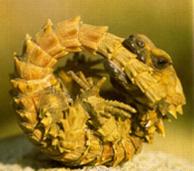
Its small leaf-shaped teeth were not designed to break up large plants and it had no grinding teeth. The dinosaur's triangular skull was wider than it was long and had a narrow beak at the end to aid in stripping leaves from plants.

What did Ankylosaurus eat?Īnkylosaurus grazed on low-lying plants. Though there are insufficient foot fossils to establish whether Ankylosaurus had toes, it's believed the dinosaurs likely had five toes on each foot like other ankylosaurs. "It looks like they definitely struck something hard." What's more, the PLOS ONE study concluded that that the huge tail could easily have broken the bones of most of its predators.Īnkylosaurus moved on all four limbs, and its hind limbs were slightly longer than its forelimbs. "In two fossil specimens, the tail clubs show damage," Carpenter said. Whatever the case, it seems the dinosaur did sometimes use its tail as a weapon. Alternatively, it may have been used for combat between two Ankylosaurus, such as over territory or mates. For instance, the tail may have been used for display purposes, such as for attracting mates. Scientists have proposed several different hypotheses for the purpose of the dinosaur's club, according to a 2009 study in the journal PLOS ONE. The stiff tail likely evolved before the knob, according to a 2015 study in the Journal of Anatomy. The tail contained vertebrae that were woven together to form a stiff rod at the base of the club at the end. "It would be difficult even without the armor to get a purchase on it because its body is relatively flat."Īside from its armor, another defining characteristic of Ankylosaurus was its tail club. "You have to understand that they had a very rotund body and were wider than they were deep," Carpenter said.

However, even without these defenses, Ankylosaurus would have been difficult for predators to kill.

ARMADILLO LIZARD ADAPTATIONS MOVIE
An ankylosaur discovered in Montana in 2016 looks eerily like Zuul, a fictional monster from the movie "Ghostbusters." (Image credit: Brian Boyle/Copyright Royal Ontario Museum Columbia Pictures Corporation)


 0 kommentar(er)
0 kommentar(er)
